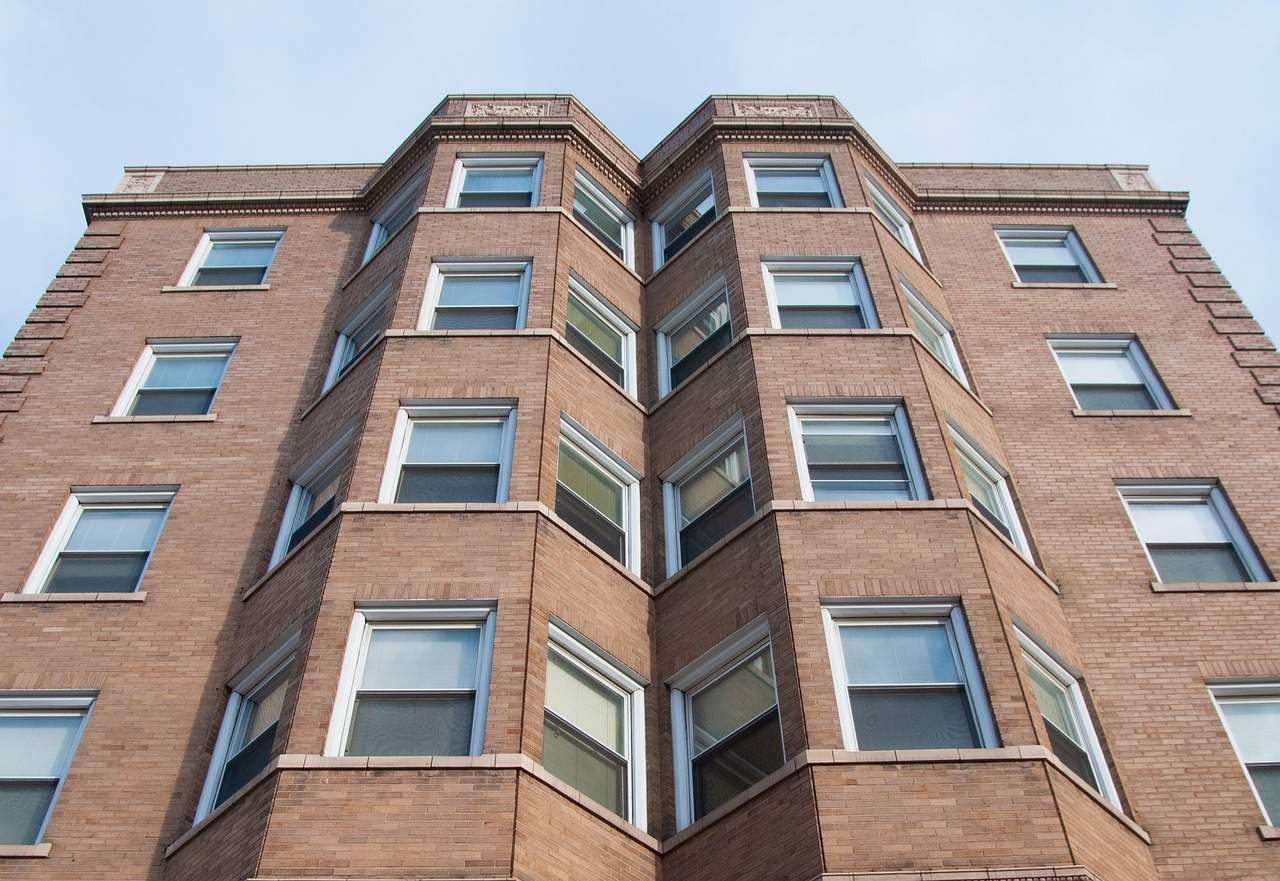
CRE Experts' Predictions For 2022 Were Way Off — And Right On
Many in the commercial real estate world started the year with the global ripple effects of the omicron variant top of mind. But as pandemic restrictions in much of the world have lifted – with the notable exception of China – new concerns have come to dominate conversations about CRE.
While some in the world of commercial real estate predicted economic headwinds after 2021's surprisingly strong year, few were prepared for the volatility of 2022.
Chief among them is the Federal Reserve's rapid pace of interest rate hikes in response to historic inflation, which appears to be finally cooling from this year's record highs.
The factors leading to runaway inflation, including Russia’s invasion of Ukraine, continue to play a role in the real estate sector in ways that weren’t foreseen in January.
Some early predictions proved incorrect: Despite the seemingly mounting political consensus, 1031 exchanges and the carried interest tax loophole were not ended by President Joe Biden’s marquee infrastructure bill. And despite continued industrial demand and the mushiness of today’s office market, developers have yet to trade suburban office parks for warehouses.
In January, Bisnow polled CRE experts for their takes on what would be the dominant trends of 2022. Below, we break down what they got right and what they missed.
Correct prediction No. 1: Rising inflation will compound rising construction costs, resulting in a slowdown or cancellation of some developments.
One of the most dominant storylines this year was inflation reaching the highest levels in decades, fueled in part by rising housing prices. The rapid increase in the cost of goods this year forced construction projects with tight budgets back to the drawing board.
In January, Behring Co. founder and CEO Colin Behring correctly predicted that inflation would mix with already rising costs for materials and labor to create bracing construction headwinds, adding: “Projects that were already struggling will be shelved for the time being.”
But Behring also predicted that “only certain areas and asset types will be affected materially,” which proved too optimistic of an outlook. Even the “darlings of real estate,” industrial and multifamily properties, saw their outlooks dim this year due to persistent inflation, Moody’s Senior Economist and Director of Economic Research Thomas LaSalvia told Bisnow in September.
The true effects of today’s difficult economic environment are expected to ripple into 2023. Dodge Construction Network expects the number of multifamily units under construction to be up 16% in 2022 compared to the previous year, but it expects a 9% decline in 2023 due to the effects of rising costs and turbulence.
Correct prediction No. 2: The hotel market will hit new records in 2022.
Revenue per available room and average daily rates for hotels nationwide have surpassed pre-pandemic records, propelling the sector to an improbably strong year. Between 2020 and 2021, transaction volume rose from $8B to roughly $40B, and the sector appears poised to come close to $40B again this year, if not a bit below it, said Wei Xie, the East Region research lead for JLL.
That recovery, which Xie called “remarkable,” emphatically outpaced the hotel sector’s recovery following 9/11 and the Great Financial Crisis, despite the choppy credit markets in the latter half of this year.
“It took a substantially longer time period to go from the bottom to the peak” in previous crises, Xie said. “I think it's the remarkable speed in terms of recovery, which is driven by the fundamentals.”
The hotel investment sales market appears to be cooling. Despite the sheer volume of trades this year surpassing 2019 levels, the third quarter began to see properties selling at discounts compared to high points set earlier this year, according to a report from LW Hospitality Advisors. The firm predicted a near-term downward pressure on values, though it noted the cost of borrowed funds remained relatively low.
“A tremendous amount of equity earmarked towards the lodging sector remains available, and asset sales are anticipated to continue at a robust albeit reduced pace,” the report found.
Whiff No. 1: Industrial developers will target large office campuses as new sources of industrial development opportunities.
151 and 153 Taylor St. in Littleton, Massachusetts, where an office building was demolished and replaced with an Amazon distribution center.
Despite rising distress in gateway office markets around the country, industrial developers have yet to target such properties for redevelopment in a concerted way. In fact, the industrial market faced headwinds of its own, in part because e-commerce giant Amazon acknowledged it had overbuilt capacity by late summer. The subsequent pullback impacted dozens of properties and led to anger in cities like Philadelphia that had bet on Amazon as a job creator.
Even in the mid-Atlantic region centered around Washington, D.C., which is facing some of the most dire warnings about its central business district of any major market in the country, there were zero industrial adaptive reuse projects of large office campuses, according to CBRE Mid-Atlantic Research Director Stephanie Jennings. Jennings said developers are instead targeting struggling retail properties, which are more plentiful along the Baltimore-Washington corridor and elsewhere.
In many places, an office-to-industrial conversion would likely require a zoning change. That is something Xie said municipalities aren't incentivized to do, given the economic benefits of office workers.
Whiff No. 2: The end of 1031 exchanges and the carried interest tax loophole will cause headwinds for CRE.
In the end, it was the great threat that wasn’t — despite early drafts of the Inflation Reduction Act of 2022 removing the carried interest tax loophole often used by some of the largest CRE investors, a proposal that would have closed the loophole was carved out of the final version of the bill thanks to an agreement with Arizona Sen. Kyrsten Sinema.
1031 exchanges were also safe after the world of commercial real estate rallied in favor of the longtime program, ensuring firms can continue to avoid capital gains taxes on certain sales.
And despite a prediction that new spending from the infrastructure and Covid relief bills would have little effect on commercial real estate, there may be some positive knock-on effects as federal dollars are disbursed, said Collete English Dixon, executive director of the Marshall Bennett Institute of Real Estate at Roosevelt University.
“Infrastructure that is used to improve transit systems and water systems and things like that, those are ... improving the environment in which the real estate industry operates,” Dixon said.
Surprise No. 1: The Russia-Ukraine War impacted energy prices, supply chains, and commercial real estate writ large.
CRE professionals could be forgiven for failing to predict Russia’s invasion of Ukraine early this year, but pricing in the war’s costs as it drags on has become unavoidable. Impacts on the supply chain and energy, in particular, have helped fuel inflation and negatively impacted property types like data centers.
Many countries around the world moved quickly after the invasion to impose sanctions on Russian billionaires, seizing properties in places as disparate as Baton Rouge, Louisiana, and London. The war also forced companies to make decisions about doing business in Russia, with several firms, including CBRE, Savills, and Knight Frank, shutting down their Russian offices.
The flight of millions of Ukrainian refugees has also put a strain on local housing markets. In Ireland, the influx of roughly 200,000 Ukrainians put pressure on lawmakers to consider a vacant homes tax and temporarily house refugees in camps. In the United States, a nonprofit network that formed first to handle an influx of Afghan refugees broadened its embrace to welcome Ukrainian refugees, sometimes bending the rules for the sake of accommodation.
Surprise No. 2: The Federal Reserve went on an aggressive interest rate hiking campaign.
Though some saw rising inflation on the horizon, few predicted how forcefully the Federal Reserve has responded. The streak of four consecutive increases of the federal funds rate by 75 basis points is the most aggressive campaign of rate hikes since the stagflation era of the 1970s and 1980s. It has already contributed to a 13% decline in values across U.S. commercial real estate.
Roosevelt University's English Dixon said the market had already begun pricing some level of inflation and interest rate hikes into deals, acknowledging the hypercharged market in 2021 was at least in part a pandemic-era fluke. But she said the Fed caught the industry off guard.
“The extent of that increase, how big it was, how consistent it was, it was like, ‘Whoa, give me a second here, I've got to catch my breath,’” English Dixon said. “It hit everybody.”
There are some signs the campaign may be easing as the year winds down. The year-over-year increase in the consumer price index was 7.7% in October, down from 8.2% the month prior, a sign that the higher interest rates may be starting to have the Fed’s desired effect on inflation. That has led some to predict that the Fed may not institute another 75 basis point hike at its next meeting on Dec. 13 and 14.
There are also some signs that Federal Reserve Chairman Jerome Powell may be willing to back off his aggressive interest rate campaign soon as the market adjusts, English Dixon said. If so, that would make the aggressive campaign that began in March a defining but unique characteristic of 2022.
“I think a lot of times, you just consider how many levers you have and if that was the only one you think is effective. But it was just too harsh,” English Dixon said. “I think it will be unique this year. At least, God, I hope so.”
Source: From Inflation To War Here’s What CRE Experts Saw Coming (And Didn’t) In 2022
https://www.creconsult.net/market-trends/from-inflation-to-war-heres-what-cre-experts-saw-coming-and-didnt-in-2022/


 [button text="Register now" expand="true" link="https://share.hsforms.com/1J66iDYvTTHStNTtZ5bOP4w470ju" target="_blank"]
[button text="Register now" expand="true" link="https://share.hsforms.com/1J66iDYvTTHStNTtZ5bOP4w470ju" target="_blank"]














